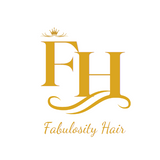Are knotless braids better
In the realm of natural hair, there are so many new and inventive ways to wear protective styles. One of the hairstyles that have rapidly been growing in popularity is knotless braids. These braids are an emblem of Black culture and give hairstyle fanatics a creative and eccentric way to beautify the appearance of their lustrous locks. This is a sleek and elegant-looking hairstyle that hasn't just risen to fame because of its aesthetic appeal but also because of how gentle it is on the scalp of an individual. This hairstyle flawlessly amalgamates comfort and fashion, giving you a voguish appearance at the utmost ease.
Knotless braids utilize the notion of conventional box braids all over the scalp but eliminate the knot that is typically made as a secure attachment at the root for the additional extension hair used for each braid. The braid starts with your natural hair, and extension hair is incorporated midshaft for volume and length using this feed-in method.
This versatile and trendy hairstyle has a serious edge over the traditional box braids, which is why the latter is becoming more obsolete. The pros of getting your hair bound in knotless braids colossally outweigh the cons, and here's how :

Pain-free and effortless installation
The feed-in technique is employed to make the no-knot box braids. The hairstylist begins with a three-strand braiding the customer's hair, then adds little clusters of additional hair as she knots the hair to the ends. There is almost little discomfort throughout insertion since no tight knots are formed. This is a significant benefit for ladies accustomed to taking pain relievers before having their hair done.
They are painless on the scalp.
These braids help reduce the strain produced at the base of the scalp, which is essential because if you have tighter braids, you will suffer from soreness and inflammation, and your hair will break away from your scalp, which can lead to damage over time if you persist in doing so. When box braids are excessively tight, they cause itchy, uncomfortable lumps and red patches on the scalp, eventually leading to hair loss. Knotless braids offer flexibility and do not weigh your hair down.
They maintain the health of your hair
Traditional box braids are much more damaging to your natural hair than knotless braids, particularly if you have a vulnerable scalp. This is because knotless braids do not have the big knot made at the base of your hair to hold the hair extensions in place. This indicates that the hair extensions do not come into contact with your scalp.
Hair extensions for box braids are produced from artificial fibers and additives, an alkaline used to bind the wings. It has been reported that this chemical inflames the sensitive scalps, causing irritation and discomfort.
Furthermore, the tension of traditional box braids tugging and straining on your hair and scalp can cause hair reduction around your frontal forehead and possibly irreversible hair loss from traction alopecia or severe damage to the hair follicle. But knotless braids kick all of these commonly occurring problems to the curb because of their scalp-friendly nature.
Last you a long time!
While it is generally recommended that you only weave your hair for 6 to 8 weeks at a time, box braids tend to become unruly and messy as you enter into your third week, leaving you with little choice but to remove your braids. Knotless braids may last up to 4 weeks, possibly longer, with adequate upkeep and attention. However, don't keep your hair braided for more than six weeks at a period; this may trigger hair deterioration and possibly even pave the way for hair loss.
As your natural hair grows out, knotless braids may appear thicker, notably around the edge of your hairline, so make sure to remove your braids before you start noticing these side effects.
Minimal drawbacks
Knotless box braids are more time-consuming to insert than regular box braids. You should budget 4-6 hours (or more) for installation. Knotless box braids are also somewhat more expensive than traditional ones due to the increased time necessary to apply them.
The effort and money spent, however, are worthwhile because these braids are kinder on your scalp and hair.
How to care for knotless braids
You'll need to properly tend to your scalp and remove any build-up throughout the four to six weeks you're wearing your braids, just like you would with any protective style. One advantage of knotless braids is that your scalp is visible. You can easily wash or treat targeted areas on your scalp. On the other hand, knotless braids offer a difficulty that may occur with conventional box braids, which is the widely occurring inconvenience; frizz.
We are aware. Frizz is typically undesirable. Cleaning your hair and scalp is essential for preventing the accumulation of gunk and keeping your hair hydrated even when it's covered. A moisturizing spray or leave-in conditioner is the finest method to hydrate your knotless braids. Opt for natural moisturizers such as coconut water, shea butter, and argan oil. Pick a good bottle with a tiny nozzle to ensure that the product is applied softly and uniformly to your braids. Mist your braids twice a week, and tie your braids in a silk scarf or hat when sleeping to prevent moisture loss.
So what are you waiting for?
When it comes to style choices, the variety is endless. If you're going to work out, toss your braids up in a high or low ponytail, weave in a bun or half-up, half-down bun for dinner, or adorn an updo for a wedding or party. The braids themselves may be customized and jazzed up in a multitude of ways, including bohemian knotless with curls, colorful gel bands, and beads. Adopt the knotless bob for a playful, seductive style that will make you stand out from the crowd!


Tie your hair up and keep the rest of the hair sleek. Our Knotless Braid With Beads are made of good elastic nylon material, soft and breathable, comfortable to wear, and does not add any burden to your head. Capsize or head size is an essential part of the wig-making process. That’s why we strongly advise customers to use a measuring tape to measure the circumference of their head or ask someone to help measure the circumference of their head before ordering our wi
Leave a comment